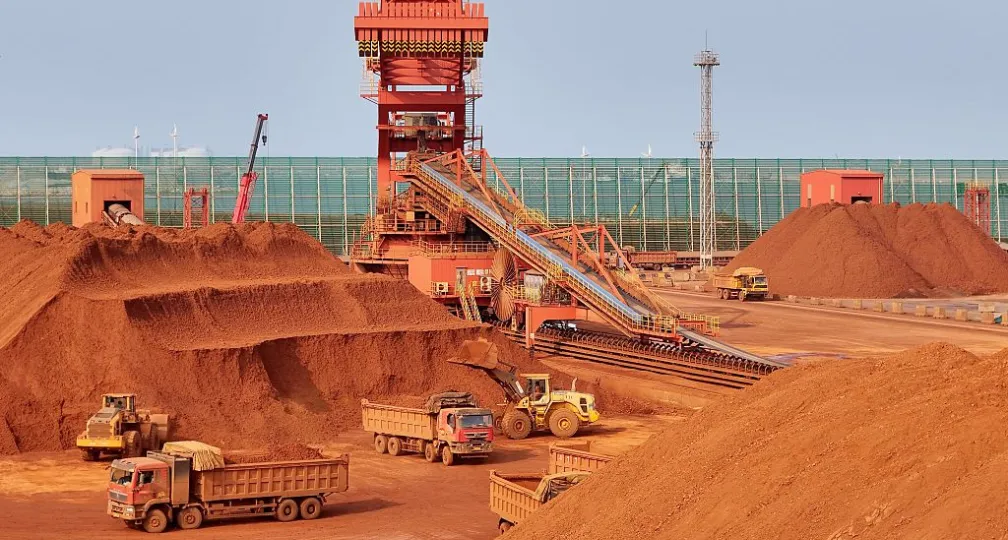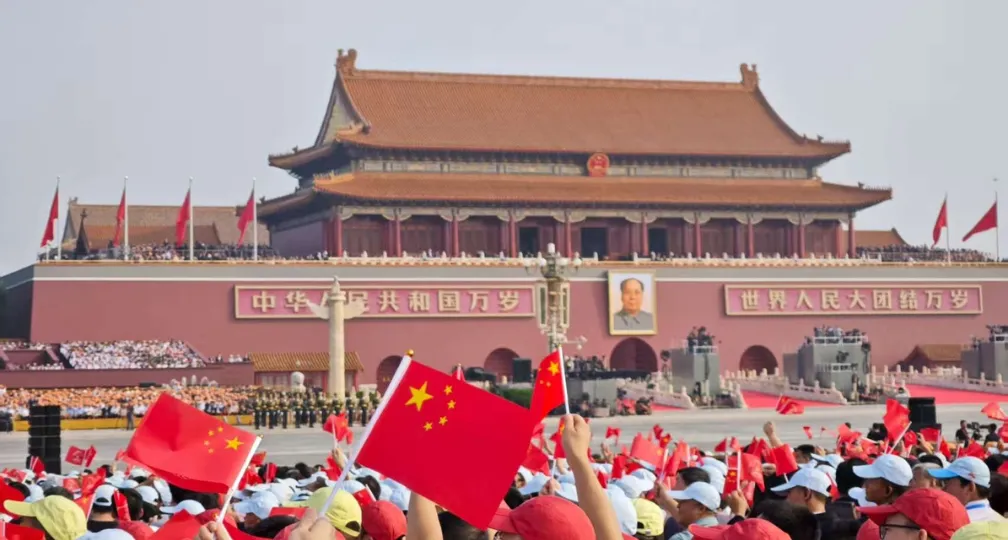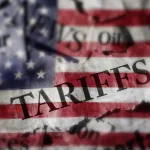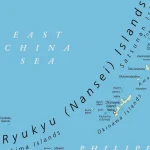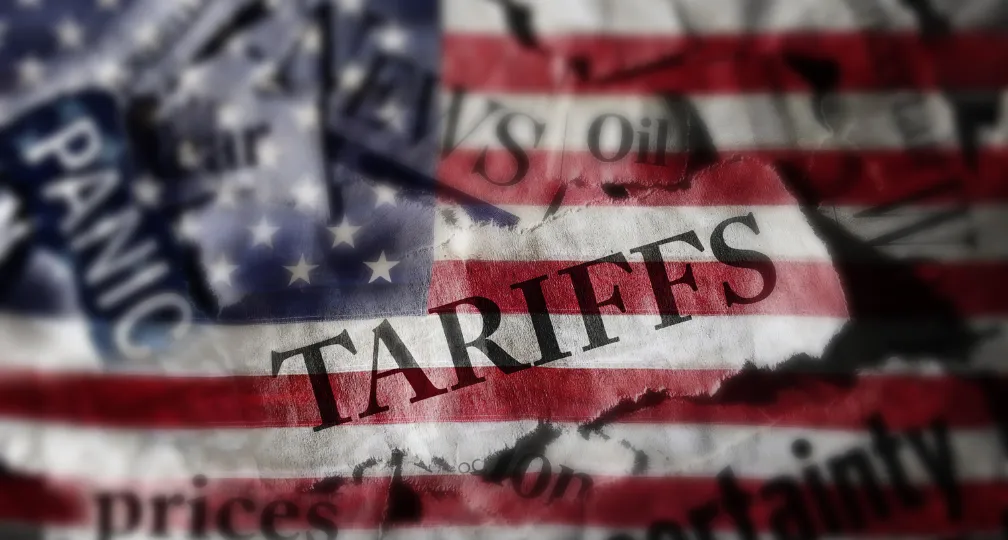What the Hamas-Israel ‘humanitarian pause’ really meant
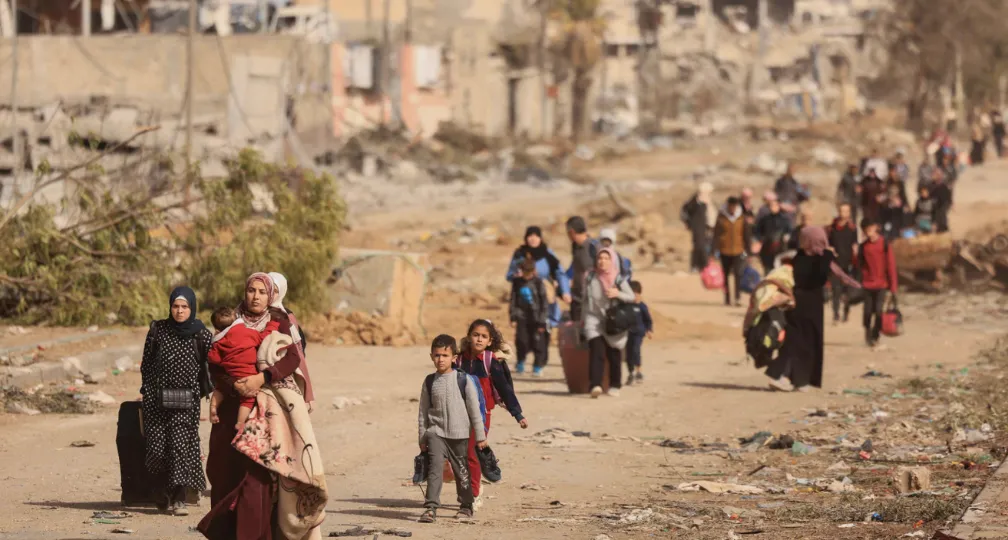
Civilians victimized
Gaza is a narrow strip of land surrounded by Israel, Egypt and the Mediterranean Sea, with a population of 2.1 million. It only takes a little more than an hour to drive from its southern tip to its northern tip, and less than a 30-minute drive from the Gaza-Israel border to the Mediterranean Sea. Gaza is separated from Israel by high walls, its airport has been destroyed and its fishing zone is limited to around six nautical miles. Before the conflict, some 500 trucks a day delivered food, water and fuel to help support people’s lives.
Gaza, referred to by some as an “open-air prison,” is connected to the outside world by three checkpoints. The Erez crossing at the northern end of the strip, the major route from Gaza into Israel, and the Kerem Shalom crossing in the southeastern part of Gaza, a commercial goods junction with Egypt and Israel, had their walls and fences destroyed on Oct. 7 as Hamas launched a surprise attack on Israel. Then, Israel declared the two crossings closed and began ground operations in Gaza. The only remaining open checkpoint is the Rafah crossing in the southernmost part of Gaza, which Egypt manages. Egypt, which had recently received some 150,000 refugees from Syria and 140,000 from Sudan, was initially reluctant to keep the crossing open.
However, as the humanitarian situation in Gaza worsened drastically, on Oct. 21 Egypt allowed trucks loaded with humanitarian supplies to enter Gaza. Meanwhile, Israel is concerned that such relief supplies could be diverted to Hamas or that Hamas militants could escape to Egypt. The number of aid deliveries to Gaza via the Rafah crossing — and the Kerem Shalom crossing from Dec. 17 — is small compared with pre-conflict levels. Even before the conflict, Israel had been restricting deliveries of goods to Gaza. Ever since Hamas took control of Gaza in 2007, the group repeatedly launched rocket attacks at Israel, and Israel countered them with its Iron Dome missile defense system while conducting airstrikes against Gaza.
There is nothing new about Hamas firing rockets from private-sector facilities using civilians as human shields and Israel conducting airstrikes on densely populated Gaza, destroying civilian housing. What is different about the ongoing conflict is that Hamas has used drones to bomb Israeli observation towers and has conducted saturation attacks by firing several thousand missiles at a number of targets across Israel to evade the Iron Dome. It also launched cross-border attacks on Israel by destroying walls and fences surrounding Gaza, killing more than 1,200 civilians and abducting some 250 people hostage. Then Hamas threatened to execute hostages in retaliation for Israeli attacks carried out without warning.
Hamas’ terrorism actions infuriated Israel. With the aim of exterminating Hamas and freeing all the hostages, Israeli Prime Minister Benjamin Netanyahu’s administration conducted airstrikes of unprecedented intensity and launched a large-scale ground invasion in Gaza. Moreover, Israel ordered citizens in northern Gaza, where much of the population is concentrated, to move south. The Israeli military continues to sweep across Gaza, destroying houses and clearing the land. More than 52,000 houses and housing complexes — more than half of total — were torn down in Gaza, and 1.9 million-strong people were forced to flee their homes. This means over 85% of all the residents in Gaza have been forcibly displaced.
Even during the “Nakba” (meaning catastrophe in Arabic), in which the mass displacement and dispossession of Palestinians took place after Israel was formed in 1948, the number of displaced people was roughly 750,000. As Israel continues to invade Gaza to demilitarize the area, Palestinian Authority President Mahmoud Abbas has condemned the move, saying it will constitute a “second Nakba.” The United Nations Relief and Works Agency for Palestine Refugees in the Near East (UNRWA) has been working to support medical care and food distribution in Gaza, but UNRWA-run schools and hospitals have become targets of Israeli attacks. At least 130 UNRWA employees have lost their lives in Gaza.
Divided U.N. Security Council
While many civilians were being victimized in the conflict, U.N. member states were at odds over a draft resolution calling for a cease-fire. On Oct. 16 at the U.N. Security Council, Russia submitted a draft resolution calling for a humanitarian cease-fire in Gaza, but it failed to obtain enough votes in favor to be adopted, as it lacked specific condemnation of Hamas. But the fundamental issue was that Israel remained set against a cease-fire, believing that it would only benefit Hamas, and the United States also strongly opposed it at the U.N. Security Council in support of Israel. At that time, voices calling for humanitarian pauses began to arise from U.N. agencies.
On Oct. 13, UNICEF Executive Director Catherine Russell called for a humanitarian pause to allow much needed aid to reach children and families in Gaza. Pushed by calls from the U.N. for a humanitarian pause to enable the delivery of humanitarian assistance and allow civilians to take shelter, Brazil, which held the Security Council’s rotating presidency for October, submitted a draft resolution on Oct. 18 asking for such a pause. Although the draft resolution garnered support from 12 council members, the 15-member council failed to adopt it due to a veto cast by the U.S., a permanent member, saying it did not mention Israel’s right of self-defense. Even though Israel had been hit by Hamas’ terrorist attacks, we have to say that its counter operations against Hamas lack balance.
As the U.N. Security Council failed to make decisions, the U.N. General Assembly held an emergency special session meeting on Oct. 26, and on the following day adopted by a majority a resolution jointly presented by Arab countries calling for a humanitarian truce, with 120 countries voting in favor. With the rise of international public opinion supporting humanitarian pauses, sympathy with Palestine and anti-Israel demonstrations spread in the U.S. especially among younger generations, forcing U.S. President Joe Biden’s administration, which had been supporting the Netanyahu administration, to change its policy. Following the G7 foreign ministers’ meeting in Tokyo on Nov. 8, the ministers issued a statement supporting humanitarian pauses and corridors, obtaining endorsement also from U.S. Secretary of State Antony Blinken.
Finally, on Nov. 15, the U.N. Security Council adopted resolution 2712, which called for urgent and extended humanitarian pauses. While the U.S. didn’t vote against the resolution, it abstained, along with the United Kingdom and Russia. The U.S. and the U.K., which have stood in opposition to Russia over Ukraine, ended up taking the same voting stance as Moscow in regard to Gaza. On Nov. 24, a humanitarian pause took effect in Gaza in exchange for Hamas’ release of hostages, mediated by the U.S. and Qatar, as Hamas leader Ismail Haniyeh has been based in Doha. Humanitarian supplies were delivered from Egypt to Gaza. In exchange, Palestinian prisoners jailed in the West Bank, an area west of the Jordan River occupied by Israel, were released. The humanitarian pause lasted seven days. But is there any difference between a cease-fire and a humanitarian pause?
Cease-fire vs. humanitarian pause
A cease-fire is a suspension of fighting agreed upon by parties to a conflict. It is often mediated by a third party, such as regional or international organizations, or larger countries. If a cease-fire negotiation is settled, the relevant parties usually sign an agreement in writing. The United Nations Department of Political and Peacebuilding Affairs, a department of the U.N. Secretariat, which this author used to work for, offers various databases of peace agreements and mediation. One such database is Language of Peace, jointly run with the Lauterpacht Center for International Law at the University of Cambridge. The database includes around 1,200 peace agreement documents, many involving cease-fires. Various terms are, however, used in the peace agreements, such as cease-fire, cessation of hostilities, truce/armistice, standstill, stand-down or suspension of military offensive. How to describe a cease-fire differs depending on the political and cultural background of a conflict and negotiation processes.
Meanwhile, a “humanitarian pause” implies a temporary cessation of hostilities purely for humanitarian purposes, usually for a limited period and for a specific geographic area where humanitarian activities are to be carried out. Still, humanitarian pauses are regarded as a type of cease-fire in a broad sense. What is important in a practical sense is whether the agreement is “definitive” or “preliminary.” A typical example of a definitive agreement is the Comprehensive Peace Agreement signed in 2005 in Sudan following the north-south conflict there. Based on this agreement, a cease-fire took effect, followed by a referendum, which resulted in South Sudan becoming independent from Sudan in 2011. Such an agreement includes a cease-fire monitoring and verification mechanism, which is often handled by the U.N. or regional institutions.
Monitoring and verification
Over the years, several U.N. peace operations have been carried out in the Middle East to monitor and verify cease-fire agreements. There are currently three U.N. peacekeeping operations in the region: the United Nations Truce Supervision Organization in Israel, the United Nations Disengagement Observer Force in the Golan Heights and the United Nations Interim Force in Lebanon. There are also two Special Political Missions — field operations consisting of civilian personnel: the Office of the United Nations Special Coordinator for the Middle East (UNSCO), established in Jerusalem following the signing of the Oslo Accords in 1993, and the Office of the United Nations Special Coordinator for Lebanon.
All of these U.N. peace operations were subject to the consensus of the U.N. Security Council, meaning none of the five permanent members would cast a veto. For the current conflict over Gaza, the head of the UNSCO has been serving as a regional coordinator, traveling around Middle East countries and reporting the situation to the U.N. Security Council together with U.N. Secretary-General Antonio Guterres. They are addressing the significance of political settlement to the conflict — a “two-state solution” in particular, whereby Israel and Palestine live side by side in peace and security with Jerusalem as the capital of both states. On the other hand, the Multinational Force and Observers (MFO) body has been operating around the Sinai Peninsula in Egypt without consensus among the U.N. Security Council’s permanent members.
Following the 1973 Arab-Israeli War, Egyptian President Anwar Sadat and Israeli Prime Minister Menachem Begin signed a historic peace treaty in 1979, with U.S. President Jimmy Carter serving as a mediator. While a U.N. peacekeeping operation had been agreed upon under the Egypt-Israel peace treaty, it did not take place as the Soviet Union hinted that it would exercise its veto. Instead, the MFO, made up of military personnel supplied by Western countries, was established outside the U.N. framework. However, the Palestine Liberation Organization was offended by the MFO operating in the region and tensions intensified on the borders between Israel and Lebanon. Later, Israel invaded Lebanon.
Divided public opinion
If a cease-fire agreement is “preliminary,” it will provide citizens with temporary peace, and will also give warring parties time to prepare for rebuilding the front line. As a result, a resumption of fighting could bring about an even worse catastrophe. A typical example is the Bosnian civil war. During the ethnically rooted civil war that started in 1992, temporary cease-fires and resumptions of fighting took place 36 times. In 1995, warring parties agreed on another cease-fire, brokered by the U.S. and Europe, that lasted from January to the end of April. Then, the Srebrenica massacre occurred in July 1995. Roughly 8,000 Muslim soldiers and civilians were killed in Srebrenica, a town in eastern Bosnia.
The latest humanitarian pause in the Hamas-Israel conflict was merely a preliminary pause in fighting that took effect in exchange for Hamas releasing hostages. Hamas released 110 hostages of Israeli and other nationalities. The seven-day pause also took place in exchange for food, blankets, water, medical supplies and fuel amounting to an average of 170 trucks a day that were delivered to Gaza. The supplies recovered to one-third of the pre-conflict levels. At the same time, the seven-day period was a time for the Israeli military to reorganize its counteroffensive operations in conducting further ground invasions. After the fighting resumed, Israeli troops expanded their ground offensive to Khan Younis in southern Gaza, meaning they have invaded four of the five areas in Gaza, with the exception of the southernmost, Rafah. Israeli forces are continuing with airstrikes and ground assaults targeting Khan Younis, believing that Hamas leadership is hiding in the area.
Public opinion in the U.S. and Europe is torn over the humanitarian catastrophe brought about by the Hamas-Israel conflict. As the U.S. presidential election approaches, the Biden administration’s approval rate has been stuck near record lows for his presidency. Cracks are created again within Europe, just like when far-right political parties and populists calling for the exclusion of immigrants gained power in Europe in 2015 following the refugee crisis triggered by the Syrian civil war. German Chancellor Olaf Scholz’s administration has been maintaining a supportive stance toward Israel, but anti-Jewish sentiment is growing within Germany. The humanitarian crisis in Gaza, the so-called open-air prison, is extending far beyond the Middle East and drawing new fault lines within Western countries.
Human dignity
In such a divided world, we must focus on “human dignity,” the term used by Prime Minister Fumio Kishida in his speech at the U.N. General Assembly in September. In his speech to the world’s leaders, Kishida said: “We should go back to the very basic foundation of treating human life and dignity with paramount importance. We should aim for a world caring for human dignity, where vulnerable people can live safely and securely.” The dignity of all the people — including more than 130 hostages still held in Gaza and some 2 million civilians in Gaza whose houses were destroyed and whose lives are threatened by Israel’s counter-Hamas operations — should be equally protected. For the people of the Islamic world, the humanitarian catastrophe in Gaza parallels with the 1945 atomic bombings in Japan.
On Nov. 5, following a meeting with Kishida in Kuala Lumpur, Malaysian Prime Minister Anwar Ibrahim said the extent of the damage caused by the Israeli bombing of Gaza had exceeded the damage sustained by Hiroshima during World War II. In Khan Younis, there is a district called the “Japan neighborhood,” where houses and hospitals were built with assistance from Japan. Children living in the neighborhood have been flying kites every March in solidarity with the people of Japan who were affected by the 2011 Great East Japan Earthquake and tsunami. Can children in Gaza find hope again in this world? When will the hostages abducted by Hamas be reunited with their families? The people of the international community are being tested as to whether they can overcome the divide and act to protect human dignity regarding the conflict in Gaza.
[Note] This article was posted to the Japan Times on January 16, 2024:
https://www.japantimes.co.jp/commentary/2024/01/16/world/humanitarian-pause-hamas-israel/
(Photo Credit: AFP / Aflo)

Geoeconomic Briefing
Geoeconomic Briefing is a series featuring researchers at the IOG focused on Japan’s challenges in that field. It also provides analyses of the state of the world and trade risks, as well as technological and industrial structures (Editor-in-chief: Dr. Kazuto Suzuki, Director, Institute of Geoeconomics (IOG); Professor, The University of Tokyo).
Disclaimer: The opinions expressed in Geoeconomic Briefing do not necessarily reflect those of the International House of Japan, Asia Pacific Initiative (API), the Institute of Geoeconomics (IOG) or any other organizations to which the author belongs.


Senior Research Fellow
Yoshiyuki Sagara is a senior research fellow at the Asia Pacific Initiative (API), where he focuses on economic security, sanctions, health security policy including COVID-19 response, international conflicts, and Japan’s foreign policy. Before joining API in 2020, Mr. Sagara had 15 years of career experience working in the United Nations system and the Japanese government, as well as in the tech industry. From 2018 to 2020, he served as Assistant Director of the Second Northeast Asia Division (North Korea desk) at the Ministry of Foreign Affairs of Japan. From 2015 to 2018, he served in the Guidance and Learning Unit within the Policy and Mediation Division of the UN Department of Political Affairs in New York, where he analyzed and disseminated best practices and lessons learned from UN preventive diplomacy and political engagements, such as in Nigeria, Iraq, and Afghanistan. From 2013 to 2015, he served in the International Organization for Migration Sudan, based in Khartoum. As a project development and reporting officer in the Chief of Mission’s Office, he developed and implemented peacebuilding and social cohesion projects in conflict-affected areas of Sudan, especially Darfur. While serving in the Japan International Cooperation Agency (JICA) Headquarters from 2012 to 2013, he managed rural and fishery development projects in Latin America and the Caribbean region. From 2005 to 2011, he worked at DeNA Co., Ltd. in Tokyo and engaged in expanding tech businesses. Mr. Sagara has been widely published and spoke on public policy, including in the Japan Times. He coauthored a report, The Independent Investigation Commission on the Japanese Government’s Response to COVID-19 (API/ICJC): Report on Best Practices and Lessons Learned (Discover 21, 2021). He holds a Master of Public Policy from the Graduate School of Public Policy at the University of Tokyo, and a BA in law from Keio University.
View Profile-
 Analysis: Ready for a (Tariff) Refund?2025.12.24
Analysis: Ready for a (Tariff) Refund?2025.12.24 -
 China, Rare Earths and ‘Weaponized Interdependence’2025.12.23
China, Rare Earths and ‘Weaponized Interdependence’2025.12.23 -
 Are Firms Ready for Economic Security? Insights from Japan and the Netherlands2025.12.22
Are Firms Ready for Economic Security? Insights from Japan and the Netherlands2025.12.22 -
 Is China Guardian of the ‘Postwar International Order’?2025.12.17
Is China Guardian of the ‘Postwar International Order’?2025.12.17 -
 Japan-India Defense in a Fragmenting Indo-Pacific2025.12.10
Japan-India Defense in a Fragmenting Indo-Pacific2025.12.10
 The “Economic Security is National Security” Strategy2025.12.09
The “Economic Security is National Security” Strategy2025.12.09 Event Report: The Trump Tariffs and Their Impact on the Japanese Economy2025.11.25
Event Report: The Trump Tariffs and Their Impact on the Japanese Economy2025.11.25 Trump’s Tariffs Might Be Here to Stay – No Matter Who’s in Power2025.11.28
Trump’s Tariffs Might Be Here to Stay – No Matter Who’s in Power2025.11.28 The Tyranny of Geography: Okinawa in the era of great power competition2024.02.09
The Tyranny of Geography: Okinawa in the era of great power competition2024.02.09 The Real Significance of Trump’s Asia Trip2025.11.14
The Real Significance of Trump’s Asia Trip2025.11.14



